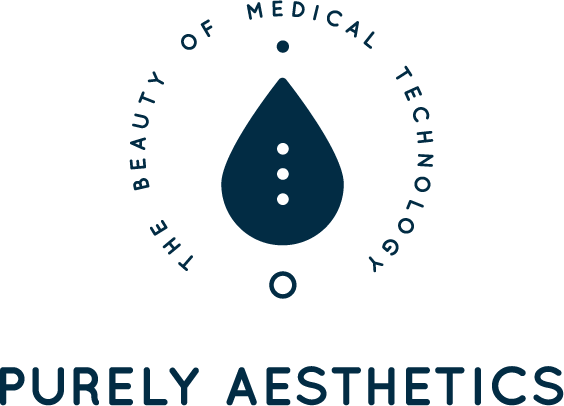
The field of medical aesthetics has grown exponentially over the past 20 years. Once reserved for the elite few, minimally invasive cosmetic procedures have become far more mainstream – available and enjoyed by all wanting to look and feel their best.
According to statistics released by the American Society of Plastic Surgeons, the number of minimally invasive cosmetic procedures (such as Botox, facial fillers, and chemical peels) has risen consistently since 2000, with a total rise of 228% between 2000 and 2018. The top two minimally invasive procedures are Botulinum Toxin Type A (Botox, Dysport, Xeomin) injections with 7.4 million procedures in 2018 (up 3% since 2017), and soft tissue fillers (such as Juvederm and Radiesse) with approximately 2.7 million procedures in 2018 (up 2% since 2017).
As we continue to see growth and innovation in the area of medical aesthetics, there are some common misconceptions that have persisted over the years. We’ll separate fact from fiction on five common myths below.
Myth #1: If I get a dermal filler, it will leave my skin saggy and wrinkled as the filler wears off.
Fact: Dermal fillers (most commonly composed of hyaluronic acid) temporarily replace volume loss, which is a major contributor to the aging process, resulting in a smoother, more youthful appearance. How long these effects last depend on the type of filler used (Juvederm, for example, typically lasts about a year, while Juvederm Voluma can last up to two years).
Hyaluronic acid is a substance found naturally in the body, and as the filler breaks down over time, the volumizing effect gradually disappears along with the product, leaving you basically where you would be – but no worse then – had you never had treatment.
In fact, some studies have shown that fillers have actually produced new collagen in the areas of injection. Even after the fillers have been reabsorbed, this collagen remains, showing long-term benefits for volume restoration. It is unclear whether this is a property of the filler used or a result of the expansion of the skin tissue from the product being placed in the area. Either way, it seems clear even on a microscopic level, that the condition of the skin and the extent of wrinkles are not worsened by the injection of filler.
Myth #2: If I suffer from migraine headaches, I can be treated with Botox and eliminate wrinkles at the same time!
Fact: The FDA has cleared Botox for the treatment of chronic migraine headaches. However, seeing a provider to treat your forehead wrinkles with Botox and hoping that your migraines will disappear is unrealistic. The injection sites to treat migraines target very specific locations on and around the head.
Similarly, the treatment protocol for treating fine lines and wrinkles with Botox also targets specific areas on the forehead and face, however, they are different than the injection points for the treatment of migraines and may vary from person to person depending on the individual’s desired results.
Myth #3: Latisse (the prescription eyelash growth serum manufactured by Allergan, the maker of Botox) will turn my light-colored eyes brown.
Fact: Hyperpigmentation of the iris has never been seen or documented in any Latisse user.
So where did this myth come from? Latisse shares an ingredient (bimatoprost) with another pharmaceutical drug from Allergan called Lumigan, which is used to treat glaucoma. 1-2% of glaucoma patients who use bimatoprost on the surface of their eyes saw the irreversible side effect of iris hyperpigmentation.
The difference? Latisse is applied to the base of the eyelash (on the skin) with a small, angled brush. This method of delivery only exposes the eye to approximately 5% of the drug as compared to the delivery of Lumigan, which is applied as a topical drop directly to the surface of the eyes.
Latisse is a very safe and effective product to stimulate eyelash growth and when used correctly, patients can expect to see impressive results.
Myth #4: A sunblock with an SPF of 100 is more effective than a sunblock with an SPF of 30.
Fact: SPF (Sun Protection Factor) is a relative measure of how long a sunscreen will protect you from UVB rays (the rays that cause sunburn and play a key role in developing skin cancer). Simply put, SPF indicates how much longer someone could stay in the sun without suffering a burn versus not wearing any sunblock at all. So in theory, it would take 100 times longer for a sun-seeker to get a sunburn when wearing an SPF 100 than if they weren’t wearing sunscreen at all.
SPF does NOT indicate protection against UVA rays. These rays cause skin damage that leads to tanning, as well as wrinkles and aging. The shortest wavelengths of UVA rays also contribute to sunburn. It is important to look for sunscreen products that contain the phrase “broad spectrum,” meaning that the product has ingredients that can protect you from both UVB and UVA rays.
It’s important to note that no sunscreen blocks 100% of UVB rays, and sunscreens with super high SPFs are not much more protective than those with SPFs of 30 or 50 (for example, SPF 30 blocks 97% of UVB rays and SPF 100 blocks 99%). In fact, the FDA is proposing to limit SPF values and increase UVA protection to ensure consumers get better sun protection (FDA 2019).
Of course, sunscreen is only one of the preventative measures one should consider. We always recommend protective clothing and a hat, limiting sun exposure during peak hours, and seeking shade when available.
Myth #5: These days, anyone can administer Botox treatments and give me the same results.
Fact: It may seem like everyone from your dermatologist to your dentist is offering Botox and fillers. While it’s true that since the introduction of Botox, more and more practitioners are becoming trained in its administration, it is our opinion that the human face should not be treated with a “one size fits all” approach.
Our suggestion? Take the time to find a practitioner who truly understands facial anatomy (knowing where not to inject is as important as knowing where to inject). We also recommend finding someone who stays up to date on the newest techniques and devotes a significant part of his or her practice to aesthetic treatments. Finally, make sure you have a conversation with your practitioner at the consultation before treatment is initiated; a good practitioner will take the time to find out what your goals are and explain the approach that he/she will use to obtain your desired results. Doing your homework before that first injection will have its benefits.
We hope this helps to clarify common misconceptions about some of the more well-known aesthetic treatments and products. If you have suggestions or questions for our next round of myth debunking, please comment below or send an email to info@purelyaesthetics.com.

Leave a Reply